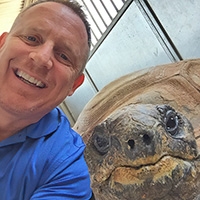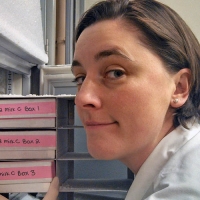
A Biology Podcast for Everyone
You have been reading about the biologists behind the Ask A Biologist website. Now you can listen to them in our popular biology podcast show. Dr. Biology has been speaking with many of the biologists that are discovering new worlds and exploring new frontiers in biology. There are over 100 episodes and we continue to add more interviews. Each show includes a full written transcript and content log.
If you have not already, please subscribe(link is external) to the podcast so you can be notified about new episodes
Want to watch some of our biologists in action? We are also building a collection of biologists in the lab and the field. Pick the "Watch" tab and pick one of the shows featuring our biologists.!
Dr. Biology interviews research scientist Kate Ihle at Barro Colorado Island in Panama. BCI is part of the Smithsonian Tropical Research Institute.
When was the last time you folded a piece of paper to make a fun shape? Maybe you made a paper plane or tried origami to make a swan. Believe it or not, the building blocks inside your body also need to fold into the right shapes to work properly. In this activity, you can build your own protein channel from paper.
Step-by-step tutorial for building your own Pocket Seed Viewer. You can use it to test the effects of light, dark, temperature and gravity on seed germination and plant growth.
Very strange things have been taking place lately. Dr. Biology and his team need your help to solve the mystery and piece together what's been happening in the lab.
When you visit a pond or the beach, what kinds of living things do you see in the water? Don’t let your eyes fool you… there’s a hidden world in water full of creatures too small to be seen!
Pages
Be Part of
Ask A Biologist
By volunteering, or simply sending us feedback on the site. Scientists, teachers, writers, illustrators, and translators are all important to the program. If you are interested in helping with the website we have a Volunteers page to get the process started.



























